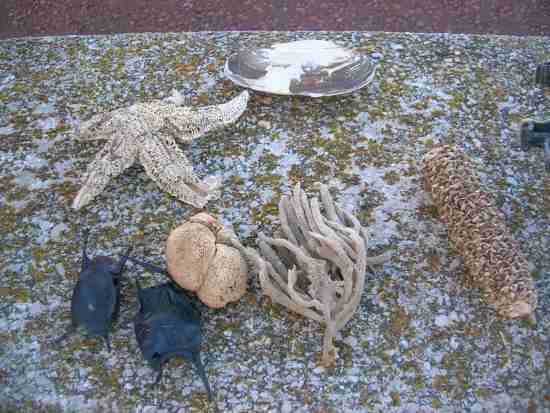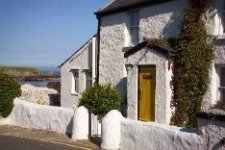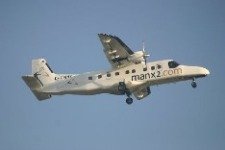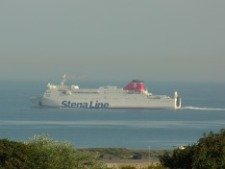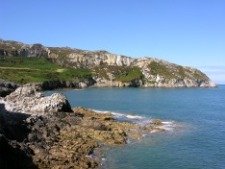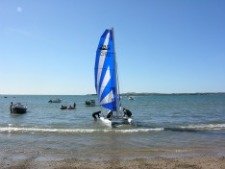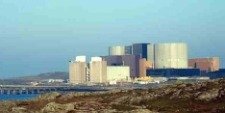|
Beachcombing an Anglesey Beach
Or perhaps a walk along the seashore on a wild and windy day. And that beachcombing pleasure is only enhanced by chance finds along the way.
Twice a day the tide lays out an assorted selection of the biodiversity of the oceans. You will be surprised what treasures it holds once you know what to look for.
It’s not just shells and seaweed from along the coast, it can also be wildlife from many miles out to sea or even from a beach as far away as the West Indies.
If you are serious about beachcombing, the best time to go to the beach is after a storm. It’s when flotsam and jetsam may have come from afar, and when the waves have torn up beds of seaweed from the sea bottom and ripped molluscs from their rocks.
Our exposed western beaches have gales on about 30 days a year, so there are plenty of chances for beachcombing while the best, most profitable beaches will be those that face into the prevailing south-westerly winds.
Once you are on the beach, head for the strandline. A close look will show it is largely seaweed in varying stages of decay.
Freshly deposited seaweed will be shiny and leathery. Most obvious will be the brown wracks, with their disc-shaped holdfasts that secure them onto the rocks, and the kelps with their claw-like holdfasts.
You will also find smaller plants of green and red seaweed like sea lettuce.
If the strandline is still fresh, look out for the jewel-like blue-rayed limpet.
Once the seaweed decays, its inhabitants die, and it becomes the domain of new creatures, tolerant of the beach environment.
Seaweed has long been used as a fertiliser as its nutrients make it a food source for many. Once on the beach it is visited by sand-hoppers, and many beetles, worms, and flies.
Herring Gulls, and crows hunt for crabs, molluscs and bird and fish corpses, while turnstones search for small invertebrates.
If the strandline is high it’s possible for sea beet, oraches and sea holly to flourish. Cuttlebones are also popular finds.
They are the internal skeleton of a squid-like mollusc, the cuttlefish, which wash up after the animal has died.
Similarly the egg mass of the common dog whelk is a spongy white ball which blows around the tide-line. You may find a pearly porcelain crab or by looking at the seaweed fronds the intricate limey network of a sea-mat.
Seaweed has long been used as a fertiliser as its nutrients make it a food source for many. Once on the beach it is visited by sand-hoppers, and many beetles, worms, and flies.
Herring Gulls, and crows hunt for crabs, molluscs and bird and fish corpses, while turnstones search for small invertebrates.
If the strandline is high it’s possible for sea beet, oraches and sea holly to flourish. Cuttlebones are also popular finds.
They are the internal skeleton of a squid-like mollusc, the cuttlefish, which wash up after the animal has died. Similarly the egg mass of the common dog whelk is a spongy white ball which blows around the tide-line. If they have curly tendrils, they belong to a dogfish, while those with horns are those of a skate or a ray.
These often come ashore on the shingle ridge at the Wildlife Trust’s Cemlyn Nature Reserve, near Cemaes.
And that’s the beauty of beach-combing.
Whether it’s to take children out to search the strandline, make sculptures with the things you find, or an attempt to research a strip of coastline, it’s a great way to enjoy the seaside.
Good Beaches for Beachcombing in North Wales: Anglesey - Newborough, Cable Bay to Porth Cwyfan, Rhosneigr to Crigyll
Llyn - Morfa Bychan, Porth Oer, Porth Neigwl.
If you would like more information about anything you find, contact the North Wales Wildlife Trust on 01248 351541.
Return from Beachcombing to Anglesey Wildlife
|





